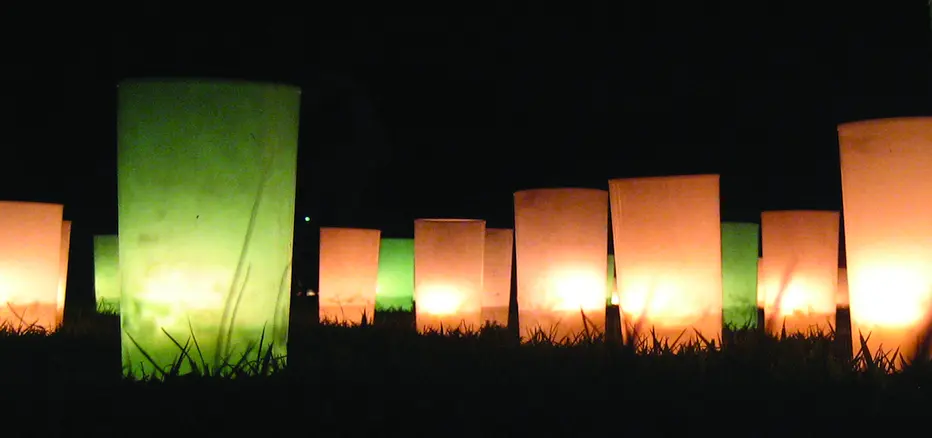The J-Gospel
In search of appropriate metaphors for Japan

Once I heard an MK who grew up in Japan remark that the thing he missed most during his home assignment in Canada was 7-Eleven. Canada is filled with 7-Elevens, but there’s something profoundly different about a Japanese 7-Eleven. When Japanese import something, they also transform it to make it relate to the taste, aesthetics, form, and needs of Japanese people or it simply isn’t accepted. When Japanese listen to music it’s J-Pop, when they watch soccer it’s the J-League, and when they turn on the radio they listen to J-Wave. But Japan is still searching for the J-Gospel message. In this article I will share gospel truths in ways that seem to resonate more naturally with Japanese.
Impurity and cleansing in Japanese thought
Shintoism is steeped in rituals of purification and so ideas of impurity and cleansing are still present in the Japanese worldview. While many people are unconscious of the connection, Japanese attitudes toward clean and unclean places in their home reflect this religious background. Starting with the instinctive Japanese feelings about purity in the home provides a natural bridge to introducing God’s demand for purity and the cleansing Jesus accomplished at the cross.
One of the ways I introduce the gospel to Japanese people is looking at the similarities between Shinto and Old Testament concepts of purity as expressed in verses like Leviticus 10:10, “You are to distinguish between the holy and the common, and between the unclean and the clean” (ESV). I look at various solutions to the problem of heart impurity and settle on Jesus’ work on the cross as accomplishing what Paul calls “the washing of rebirth” (Titus 3:5, NIV).
David C. Lewis recognizes the prominence of purity and pollution in Japanese culture.1 He says, “To speak of allowing God to ‘wash’ us clean and to put his ‘clean’ Holy Spirit within us seems to communicate more effectively but also employs the kind of vocabulary used by Jesus himself.”2
The slipper gospel
I begin by asking the hearer to picture receiving a foreign guest to their home for the first time. The guest is a welcome sight, but is wearing boots covered with mud and dirt. Sensing the host’s discomfort, the guest tries to brush off his boots but it never occurs to him to remove them. In his mind, the boots are not that dirty.
According to the Bible, this scene is similar to the dilemma of heaven and a life lived without God. Like the guest with dirty boots, our lives are stained with impurity (Proverbs 20:9). Different people will try to resolve this dilemma in various ways: Through outwardly clean lives that are still marked by inner impurity (Matthew 23:25); cleansing rituals like misogi (ascetic purification under a waterfall); or, like most people today, just trying to avoid noticeable wrongs that cause annoyance to others. Like a country that accepts a certain amount of dirt from shoes in a house, in many cultures we tolerate a certain level of sin as normal and assume that God feels the same. But the Bible teaches that God is holy and heaven is a place of pure love unstained by sin.
If people were to walk into a Japanese tatami room wearing dirty boots, the rice mat would become damaged and people would be afraid to sit on it for fear of getting dirty. In a similar way, were we to barge into heaven without being cleansed, heaven would no longer be the paradise that God describes.
When Jesus died on the cross, He provided a covering for sins. Like slippers for a person’s dirty feet, Jesus’ righteousness can cover the uncleanness of our heart. In fact His righteousness actually cleanses us so we can walk intimately with a holy God in this life, and look forward to an eternity in heaven because of what Jesus has done (Isaiah 61:10).
Other Japanese windows into the gospel
There are other metaphors that help Japanese people understand biblical truth. First, the “last Adam” (1 Corinthians 15:45) is a title of Christ that helps Japanese hearers see Adam as their oldest ancestor and greatest senpai (elder or superior). We unknowingly walk in his shadow (Hosea 6:7), but Christ was born of a virgin, uncorrupted by the first Adam’s values, and has begun a new family into which we are adopted by faith (John 1:12, 1 Corinthians 15:22, 49).
Second, the origin of the Obon Festival, which was transliterated into Japanese from the Sanskrit word
ura-bon-e, meaning “upside down”, is a fascinating tale of Buddha’s disciple longing to relieve his mother’s suffering in hell. It provides a natural bridge for helping Japanese people to consider Jesus’ teaching on the afterlife, and enables us to present Jesus as a better relief to both our temporal suffering (Job 36:15, Psalm 68:19) and eternal punishment (Isaiah 53:4, 1 Peter 2:23-25).
Finally, the beloved kotatsu is a symbol that portrays powerfully the warmth, intimacy, and security that the Japanese long for and which Adam lost in the fall. Jesus left the warmth of heaven’s “kotatsu” and entered into the cold of our world to rescue us and restore us to a place of warmth in God’s presence.
Still searching for the J-Gospel message
I’m still searching for the J-Gospel message. But I hope these attempts will move the discussion forward and stimulate others to improve upon my work. I’m convinced that more deliberate observation of cultural patterns and traditions, and consideration of the deeply held longings of the Japanese people, in interaction with the many biblical gospel metaphors, will yield more natural and effective means of sharing the gospel in Japan. 
1. Lewis, David C. The Unseen Face of Japan (Tunbridge Wells: Monarch 1993) 120-138.
2. Lewis, 138.
Tatami photo by Travis Kaya. Obon lanterns photo by Thibault Martin-Lagardette.
